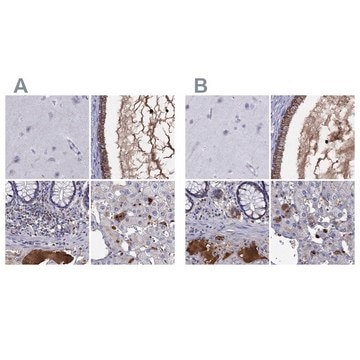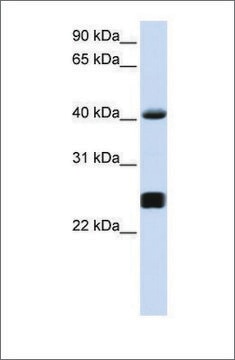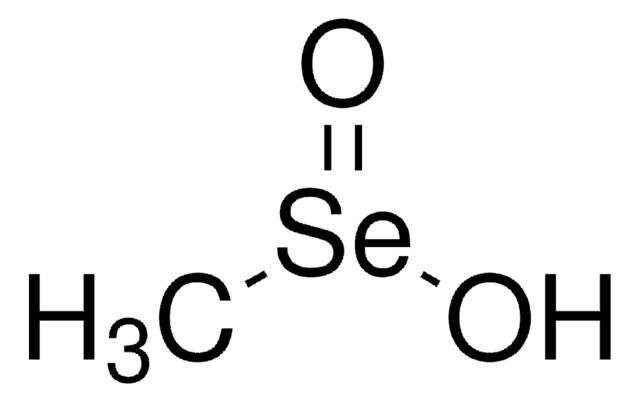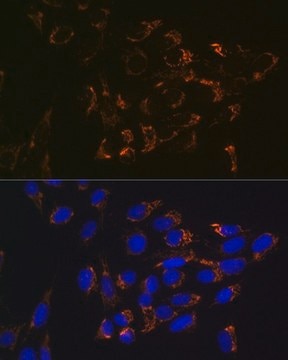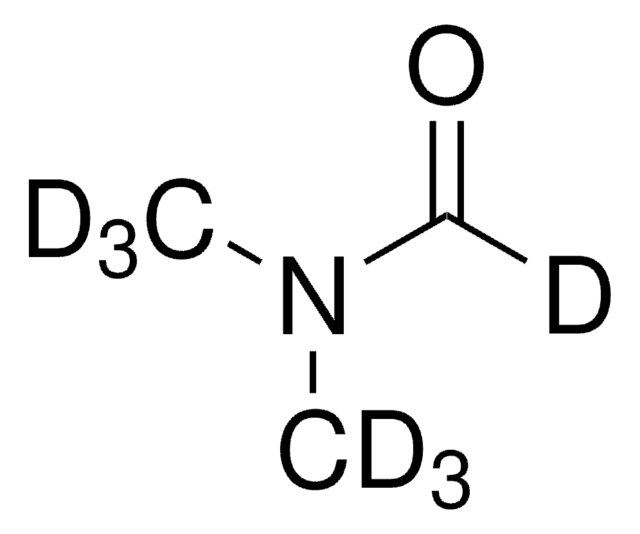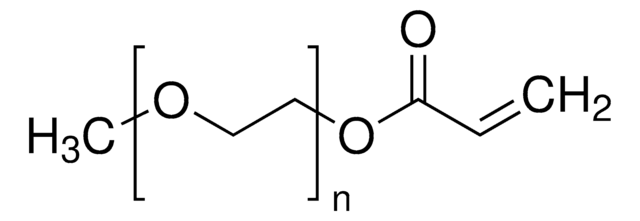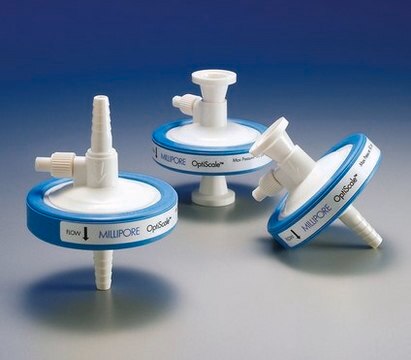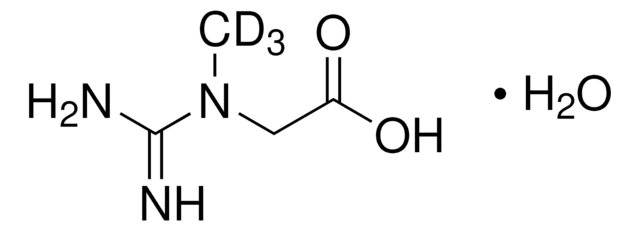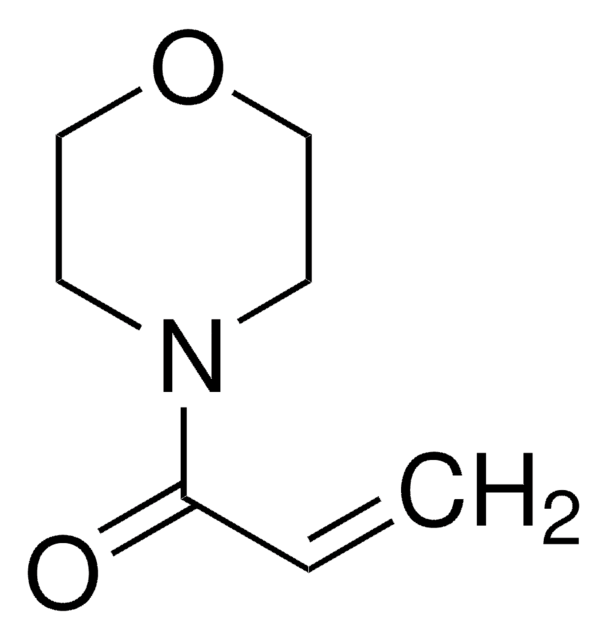MABC1182
Anti-Serpina3n Antibody, clone 13H5
clone 13H5, from hamster(Armenian)
Synonym(s):
Serine protease inhibitor A3N
Sign Into View Organizational & Contract Pricing
All Photos(1)
About This Item
UNSPSC Code:
12352203
eCl@ss:
32160702
NACRES:
NA.41
Recommended Products
biological source
hamster (Armenian)
Quality Level
antibody form
purified antibody
antibody product type
primary antibodies
clone
13H5, monoclonal
species reactivity
mouse
should not react with
human
technique(s)
immunofluorescence: suitable
western blot: suitable
NCBI accession no.
UniProt accession no.
shipped in
ambient
target post-translational modification
unmodified
Gene Information
mouse ... Serpina3N(20716)
General description
Serine protease inhibitor A3N (UniProt: Q91WP6; also known as Serpin A3N) is encoded by the Serpina3n (also known as Spi2) gene (Gene ID: 20716) in murine species. SerpinA3N is a secreted protein of the serpin family. Serpins bind and inhibit specific serine proteases and several serine proteases are reported to be substrates for SerpinA3N in vitro. It is synthesized with a signal peptide of 20 amino acids that is cleaved to generate the mature protein. SerpinA3N is expressed at high levels in brain, heart, liver, lung, spleen, testis, and thymus. However, its expression is low in kidney, skeletal muscle, and bone marrow. Serpin A3N expression can also be induced by bacterial lipopolysaccharides. The reactive center loop (RCL) of as SerpinA3N extends out from the body of the protein and directs binding to the target protease. The protease cleaves the serpin at the reactive site within the RCL, establishing a covalent linkage between the serpin reactive site and the protease. The resulting inactive serpin-protease complex is highly stable. SerpinA3N is shown to be up-regulated in the dorsal root ganglia after nerve injury and mice lacking SerpinA3N are reported to develop more neuropathic mechanical allodynia than wild-type (WT) mice. SerpinA3N is also shown to attenuate activated T cell-mediated neuronal death and reduce the severity of disease in experimental autoimmune encephalomyelitis (EAE). (Ref.: Vicuna, L et al. (2015) Nat. Med. 21(5):518-23).
Specificity
Clone 13H5 specifically targets murine Serpina3n. It is predicted to react with both pro- and mature forms of Serpina3n. This clone targets a sequence within 24 amino acids from the C-terminal region.
Immunogen
KLH-conjugated linear peptide corresponding to 24 amino acids from the C-terminal region of murine Serpina3n.
Application
Detect Serpina3n using this armenian hamster monoclonal Anti-Serpina3n Antibody, clone 13H5, Cat. No. MABC1182. It has been tested for use in Immunofluorescence and Western Blotting.
Immunofluorescence Analysis: A representative lot detected increased Serpin A3N/Serpina3n immunoreactivity in late metastasis stage lung tissue by fluorescent immunohistochemistry staining of paraformaldehyde-fixed frozen lung sections in a study employing the murine MMTV-PyMT breast-to-lung metastasis model (Sevenich, L., et al. (2014). Nat. Cell Biol. 16(9):876-888).
Research Category
Apoptosis & Cancer
Apoptosis & Cancer
Quality
Evaluated by Western Blotting in mouse brain tissue lysate.
Western Blotting Analysis: 0.5 µg/mL of this antibody detected Serpina3n in 10 µg of mouse brain tissue lysate.
Western Blotting Analysis: 0.5 µg/mL of this antibody detected Serpina3n in 10 µg of mouse brain tissue lysate.
Target description
~46 kDa observed; 46.72 kDa calculated. Uncharacterized bands may be observed in some lysate(s).
Physical form
Format: Purified
Protein G purified
Purified armenian hamster monoclonal antibody in buffer containing 0.1 M Tris-Glycine (pH 7.4), 150 mM NaCl with 0.05% sodium azide.
Storage and Stability
Stable for 1 year at 2-8°C from date of receipt.
Other Notes
Concentration: Please refer to lot specific datasheet.
Disclaimer
Unless otherwise stated in our catalog or other company documentation accompanying the product(s), our products are intended for research use only and are not to be used for any other purpose, which includes but is not limited to, unauthorized commercial uses, in vitro diagnostic uses, ex vivo or in vivo therapeutic uses or any type of consumption or application to humans or animals.
Not finding the right product?
Try our Product Selector Tool.
wgk_germany
WGK 1
Certificates of Analysis (COA)
Search for Certificates of Analysis (COA) by entering the products Lot/Batch Number. Lot and Batch Numbers can be found on a product’s label following the words ‘Lot’ or ‘Batch’.
Already Own This Product?
Find documentation for the products that you have recently purchased in the Document Library.
Our team of scientists has experience in all areas of research including Life Science, Material Science, Chemical Synthesis, Chromatography, Analytical and many others.
Contact Technical Service